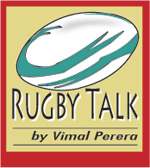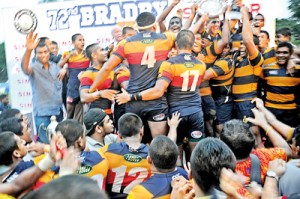More on what could have been
View(s):Last week I wrote “Business will be as usual talking about why we lost and how better the referee could have done”. It is back to yapping the referees was wrong. Others talk about the Shield grabbing episode or the issue of who should share the Shield.
The referee will always be wrong through the eyes of someone else such as a spectator, coach or player. It is important to get into his shoes and not look while being in your shoe.
 According to the referee played over 80 minutes assumed on the broadcast time. Revisit the broadcast and you will see that it is actual and not playing time. In terms of the laws of the game a match is played on the referee’s time and not the broadcast time nor the score board time. Unless a time keeper is appointed. A critic of the game called me to ask about the time and quipped that “I don’t think the referees stop their watches”. I explained to him what happens practically is that the some referees will carry two watches one for actual time and one for playing time. They also synchronize the watch with assistant referee where one keeps actual time and the other keeps playing time. Additionally they also keep time with the Substitution Official and the time and event is also recorded by the match commissioner.
According to the referee played over 80 minutes assumed on the broadcast time. Revisit the broadcast and you will see that it is actual and not playing time. In terms of the laws of the game a match is played on the referee’s time and not the broadcast time nor the score board time. Unless a time keeper is appointed. A critic of the game called me to ask about the time and quipped that “I don’t think the referees stop their watches”. I explained to him what happens practically is that the some referees will carry two watches one for actual time and one for playing time. They also synchronize the watch with assistant referee where one keeps actual time and the other keeps playing time. Additionally they also keep time with the Substitution Official and the time and event is also recorded by the match commissioner.
In the second half there was a TMO (Television Match Official) referral and two long injury stops. Lost time according to the laws may be due to injury, replacing a player’s clothing (including re-tie of a boot lace), replacement and substitution and consulting with match officials. In the second half there was a TMO referral, two long injuries, a number of replacements as well as talking to the assistant referee. The TMO would take a minute or two and two injuries a minimum of two minutes and then add the rest and then decide whether the referee has played more than required.
Another question is why the referee did not call off the match when the ball was kicked to touch or whether he should have called back as there was an indication to kick at goal. Was the kick to touch within the framework of the law? Even if it was the law applies and the line out is taken as clarified in 2015.

The moment of joy was limited for the players - Pic by Amila Gamage
Scenario 1
A team scoring a try near the end of the match may or may not take the conversion. If they decline to take the kick or take the kick within the time remaining, a restart will occur and the match will end at the next stoppage within Law. Time is taken from the strike on the ball.
In the specific query the conversion was kicked at 79:50 and the referee should allow for a restart.
Scenario 2
The same logic applies, when a penalty kick is taken before 80:00. Then the lineout will take place and the match will end at the next stoppage within Law. Time is taken from the strike on the ball.
On the kick at goal the law is clear that the tee is an indication of a kick at goal and once the intention is made there cannot be a change.
One-eyed bias on refereeing is actually a projection of the own goal-driven perception of the event. Ask yourself whether the perception will change when you look as a spectator, player, coach or referee and when looking to see the possible infringement. When we observe life through a goal-directed lens we can totally miss the obvious. We not only perceive the world according to our own perspectives but we also can become blind to seeing the world according to how other people see it or even in wanting to explore reality if it does not suit our agenda. Reference James Holbeck: The reason referees are always wrong! Simply this is an indication of what you would do if you were in the shoes of a referee.
If anybody is interested to delve into this area of thought one may read or view the world-famous awareness test from Daniel Simons and Christopher Chabris, (www.theinvisiblegorilla.com) or a one single video on selective attention test https://www.youtube.com/watch?v=vJG698U2Mvo.
The next fuss is to decide and taking the time to argue where a shield must be kept? People talk about tradition and what should have happened. Doctor Maiya Gunsekera confirmed that the only time that a sharing arose was in 1992 when he was coach and Royal played with seven Under-17 players but held to a overall tie where both legs were drawn games of 3-3 and 0-0. Then, the Royal Captain did not walk to the podium and allowed Trinity to take the Shield.
Does this one happening in a 72-year-history covering around 150 matches become tradition? At best it is a precedence. Tradition is the handing down of statements, beliefs, legends, customs, information, etc…, from generation to generation, especially by word of mouth or by practice. Bradby, being played in two legs is a tradition but that it had one leg in 1971 is a precedence to follow if a similar situation happens.
Somebody might ask me what you know because it is only we who a part of the event know what a Bradby means. It is like a statement I read elsewhere “you would find a million people saying, we as “Royalists/Thomians/Trinitians etc. are known to stand up for what is right / we have a tradition of producing gentlemen”. The question is whether you did? You have the right to be proud or be a part of the much coveted event the importance is to live up to it.
The boast of being the most significant event and Blue Riband event causes those involved to be an example to the lesser mortals. But did you provide the role model leadership to others? The Halo effect is that the lesser mortals who invade a field might be taking a cue from those who call themselves gentlemen.
What has to be looked at is the reason for such behaviour which is prevalent in most schools driven by the goals of coaches and advisors who want to show that it is worth to do what they are doing. Money and harsh aggressive attitudes which try to make professionals out of 18 to 20-year-olds is not the best when school boys should be having fun.
Dr Gunasekera reminded me of the good initiative to introduce a TMO. He asked what purpose does it serve if there is no crowd control and the camera view is blocked. Specifically a better view may have had a decision which would have gone either way or a different result. Food for thought?
People also tend to think that this second leg is not a league game of a competition conducted by the Schools Rugby Section and some rules don’t apply. Rugby is played according to World Rugby guidelines and anything played in Sri Lanka is under the governorship of the Sri Lanka Rugby Football Union (SLRFU) and schools games through the Schools Section (SLSRFA). This is not the only traditional match but there are others such as the Blaze Trophy, the Joe-Pete, the Abdul Jabbar Trophy, etc. If a player gets a red card, the normal disciplinary procedure applies and the player may have to face suspension. I would say there was luck on the part of a player who was at the receiving end of a red card and suspension recently. He escaped the attention of another card but will have to watch if he continues with his undisciplined approach. When you blame a referee for something not on your favour why not look at something that went in your favour.
* Vimal Perera is a former player, coach, referee and an IRB Accredited Referees’ Educator


